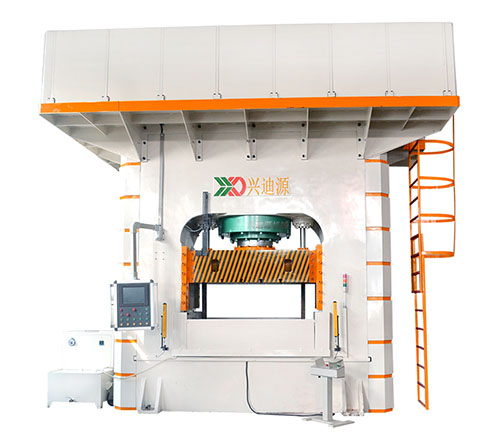In any industry, it relies on hydraulic machinery. The hydraulic drive system itself is basically the heart of the business. If they are not operating at maximum efficiency, this may slow down work and waste a lot of time, and more importantly, the actual income will waste the enterprise. What's more, if damage or symptoms of a poorly working system are not recognized this can lead to unnecessary wear on the equipment or eventually a complete rupture of the BR inlet, work stops and leads to costly repairs. However, with a little attention and attention from the operator, this can easily be avoided. This articleZhongyou Heavy IndustryBring the common faults and solutions of hydraulic system.
The core of the system is the hydraulic pump itself, which must be properly lubricated to make it work properly. In fact, recent industry analysis shows that the pollution of lubricating fluid is the cause of 80-90% of hydraulic problems. Regular inspection of hydraulic equipment and hydraulic testing should be part of basic plant maintenance for all companies. Knowledge of the warning signs of common hydraulic problems can save expensive factory machine repairs by fixing the problem as quickly as possible.
1. hydraulic system fault warning:

1) The temperature is too high:
The optimum temperature for a hydraulic system operating at maximum efficiency is eighty-two degrees Celsius. If your system frequently exceeds this temperature, it may be a sign of ventilation, damage to the heat exchanger, or dust accumulation in the filter. The increase in heat in the system will cause the viscosity of the hydraulic oil to decrease, thereby reducing the lubrication of moving parts and grinding them to each other. This can cause parts to wear and introduce metal fragments into the system, causing internal damage, and seal wear due to the abrasiveness of the fragments. A further increase in temperature will cause the fluid to oxidize and thicken, thereby forming varnish-like deposits on the parts, which will reduce the flow in the future. The higher viscosity also reduces the capacity of the lubrication and fluid cooling system.
2) Excessive noise:
Although the hydraulic system is inherently noisy, any continuous knocking or knocking sound from the system may indicate that air has entered the system (called aeration) and contaminated the hydraulic oil, which can cause many problems. As the pump passes through the system, the movement of the pump causes the bubbles to compress and decompress, resulting in an impact or knocking sound. When placed under pressure, the bubbles may burst, which can cause parts to wear and remove debris, which can further contaminate the fluid and increase the temperature in the pump. Abnormal knocks or knocks may also indicate a condition called cavitation, in which air or fluid vapor occupies part of the hydraulic pump, not just hydraulic fluid. Again,
3) Physical identification of hydraulic oil:
If you drain and replace the hydraulic oil regularly, you only need to observe the physical condition of the hydraulic oil itself, and you can also find some signs of internal problems. The temperature can be easily measured to ensure that its temperature does not exceed eighty-two degrees, turbidity due to foreign particles or contamination of air or larger particles in the fluid can be easily observed, and viscosity can be measured because excessively thick fluids can be measured. An important factor in cavitation. The volume of liquid in the system can also be measured, a lower volume than usual is a potential cavitation indicator. If the fluid is milky white in appearance, it indicates that there are signs of water pollution, which may lead to reduced lubrication and corrosion due to rust, which may cause parts to wear or jam, which may cause parts to break or cause additional pressure on the entire system. In extremely cold conditions, any water in the system may freeze, reducing performance and causing further damage. Foaming in the fluid is another symptom of aeration.
4) Unstable performance:
Any unstable or slow performance can be a sign of leakage inside or outside the system. Due to the falling pressure, this may cause the cycle time to slow down and the heat in the system to increase, which will reduce the viscosity of the hydraulic fluid, resulting in an increase in leakage, which in turn leads to a further increase in temperature in the vicious cycle. Irregular motion of the actuator may also indicate inflation.
2. solutions:

The easiest way to solve all these problems is to have your hydraulic system regularly inspected by a professional and make sure it is regularly cleaned and properly maintained. Prevention is always better than cure, especially when your business depends on it. However, problems may still arise unexpectedly, in which case immediate measures should be taken.
The increase in heat can be monitored externally with an infrared thermometer, but this is not always a good indicator of an abnormal internal temperature. The simplest solution is to ensure that there is a fluid temperature alarm in the system, if the temperature rises, it will immediately display. If an internal leak is suspected, you may need to use a hydraulic flow tester to determine the exact location, saving time and effort without disassembling the entire system to find the source of the leak. Even with a cursory external inspection of the equipment, external leaks (such as burst pipes or loose seals) are usually obvious, but it is always worth carefully checking whether all clamps and fittings are firm and whether seals are fragile or worn. This is also a way to ensure that no air can enter when the fluid escapes,
Since the main method of heat dissipation in the hydraulic system is through the water tank, it is important to check that the water level is always correct and that there are no obstacles or debris that will restrict the airflow. The heat exchanger should also be checked regularly to ensure that there are no obstacles in the core, which may reduce the flow of hydraulic oil or hydraulic oil through the core, resulting in heat accumulation. Obviously, if any of these parts are damaged, they should be replaced immediately.
The inlet of the pump should be checked regularly, as this is one of the main reasons why air enters the system. If necessary, check and tighten all intake pipe fittings. As the material degrades, the flexible intake pipe will also become worn or porous over time, so it should be inspected and replaced if necessary. The lower water level in the tank will also create a vortex, allowing air to enter, so the correct water level must be maintained. Air can enter in any way, which is also an opportunity for moisture to enter, so it is essential to perform these inspections. In some systems, there is also a risk of air entering through the pump seals, so inspections must also be carried out.
In order to ensure optimal performance, the hydraulic oil must be drained and replaced regularly. As mentioned above, this is an excellent opportunity to check the fluid for any signs of contamination by air, water or other foreign objects and find any signs of thermal damage or damage to the filtration system. This can give a warning before many problems cause physical problems in the system, and have the opportunity to drain the trapped water. Many synthetic oils for hydraulic systems are provided. They have enhanced heat resistance and cold resistance, which can protect the system from damage while reducing oil degradation due to heat. Many products also have oxidation inhibitors, anti-wear additives and defoamers to help extract air from oil, all of which can reduce the demand for oil.
[Zhongyou Heavy Industry Hydraulic Machine Equipment Advantage]]
Zhongyou Heavy Industry takes fluid pressure forming technology as its core, and its leading products include: internal high pressure forming equipment, plate filling forming equipment, pipe parts hydroforming equipment, water expansion hydroforming equipment, multi-station connected hydraulic deep drawing equipment, four-column hydraulic press equipment, frame hydraulic press equipment, etc. It can design and manufacture special non-standard hydraulic equipment, non-standard oil cylinders, non-standard hydraulic systems and automatic transmission systems according to customer requirements.

The hydraulic press equipment produced by Zhongyou Heavy Industry is widely used in aerospace, nuclear power, petrochemical, auto parts, bicycle parts, hardware products, instrumentation, medical equipment, household appliances, household utensils, sanitary kitchenware and other manufacturing industries.










